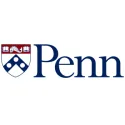The 165 research centers and institutes on campus also reflect the University’s innovative, civic-minded and pragmatic creator: More than 250 years after Ben Franklin broke new ground in founding Penn, its faculty, students, and alumni continue to make breakthroughs in research, scholarship, and education. Its many subsequent “firsts,” include the world’s first collegiate business school (Wharton, 1881), the world’s first electronic, large-scale, general-purpose digital computer (ENIAC, 1946), and the first woman president of an Ivy League institution (Judith Rodin, inaugurated in 1994) as well as the first female Ivy League president to succeed another female (Amy Gutmann, inaugurated in 2004).
Visit the University of Pennsylvania website.
